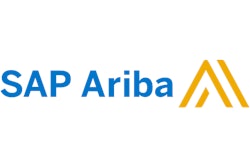Supply & Demand Chain Executive (SDCE) conducted an interview with Marcell Vollmer, Chief Procurement Officer, SAP.
SDCE: SAP is one of the largest software companies in the world. As a chief procurement officer (CPO), what keeps you awake at night?
Vollmer: Basically, I could only imagine one thing that can really keep me awake at night: unpredictable events. This may be the overall economic situation as we saw back in 2008, unforeseeable climate catastrophes like Fukushima or scarcity of supplies (e.g. raw materials). At SAP, we try to develop business scenarios, which allow us to mitigate risks and ensure that we can provide the supplies needed (mostly indirect spend).
SDCE: Your vision is for procurement to help SAP buy better and be a trusted advisor to the business for all procurement-related activities globally. How are business networks helping to achieve these goals?
Vollmer: Business networks contribute significantly to our main goal to achieve sustainable savings for the company by purchasing goods and services for the best price for the desired quality by ensuring in-time delivery. With the 1,100 suppliers we could bring on the network within less than six months, we could leverage our purchasing power by using e-sourcing and performing e-auctions on the network. The results are impressive, and in several cases, we could achieve two-digit cost savings on the network and get access to a tremendous supplier base.
On top of the purchasing benefits, we could also reduce our transactional costs. When we send a purchase order (PO) via the business network, a supplier receives it and can convert it in an invoice with a few clicks, and send the invoice back based on a PO in a fully automated way. After we receive the goods or services, the invoice is paid automatically according to the agreed payment terms.
What is really impressive is that our suppliers are benefiting from the business network in both dimensions:
- Suppliers get access to a marketplace with more than 500 billion United States dollars (USD) spend volume (provided by approximately 1.2 million suppliers), and therewith, they get access to a huge customer base.
- On top of the additional selling opportunities, suppliers can benefit from the transaction automation by reducing their transactional processing costs.
SDCE: You saw some pretty significant results in terms of cost savings and efficiencies. Can you discuss these in more detail?
Vollmer: Overall, we increased our automation rate by 50 percent. This means we benefit from automating more than 180,000 invoices by using the purchase order invoice automation capabilities of Ariba. This is 25 percent of our overall transactional volume of more than 720,000 invoices annually.
The cost savings are very impressive, too. Our first e-auctions could bring down the price by a two-digit percentage. In the area of office supply, we could reduce the cost significantly. We are currently performing a couple of e-auctions on more complex material, like network server and storage, with high savings. What is very convincing, too, is the speed of running procurement on the network. An e-auction takes less than one hour to see results. A request for information or for proposal is created in a highly automated way by using templates and is available on the network to a selected group of suppliers (or all suppliers if you want to publicly run it) in a very short timeframe.
SDCE: Were you surprised at how quickly you were able to deliver these results?
Vollmer: Absolutely, yes. We didn’t imagine that the implementation time of the Ariba Cloud solutions and the business network was so short and easy to use. My team worked hard to get four solutions—Ariba Spend Visibility, eSourcing, Supplier Management and the Catalog—up and running within three months. We were able to do this because we applied the best practices Ariba provides and did not try to bring our existing processes into the cloud solutions. This was key for the speed of implementations.
SDCE: Did you face any internal resistance in shifting to a networked model, and if so, how did you overcome it?
Vollmer: At the beginning of the Ariba Cloud implementations, the people on my team were full of expectation about the new solutions and the decision taken to enable all cloud solutions for strategic procurement (Ariba Spend Visibility, eSourcing, Supplier Management and the Catalog). After the start of the project, the entire team wanted to know what Ariba offers and how can we use it for the 3.6 billion euro indirect spend the team manages on a global level. We did some demos to show the team how the future would look, but I have to admit, it takes time to get to the heart of the people. Seeing something nice is different from using it.
The full buy-in came when the team got access to the solutions in the training and really started using the solutions in day-to-day business. What helped a lot to get buy-in from the team was the success of the first e-auction. Everybody on the team was excited in seeing the first e-auction. After they could see how fast it goes and how dramatically the prices were going down, we were all impressed. This was a major milestone in convincing my team about the new solutions and was a key driver to make the change happen.
SDCE: What advice would you offer to you peers who attempting to orchestrate similar change using business networks?
Vollmer: It starts with the top management and guidance. You need to make this a top priority and an objective for your procurement organization. I was signing the mails to our suppliers by myself and had a lot of discussions to get buy-in from our suppliers. The entire team has to feel that this is an objective for all of us and they need to understand the benefits.
When you start the journey, you need to have the right attention, and professional project management up and running to drive the change. We leveraged our internal capabilities by using the experience of the Ariba Enabling team. This team deals on a daily basis with the onboarding of suppliers, and did all the calls and mails for us. This was a great help for our team as the buyers didn’t have to do all the work attached on top of their day job. It is a small investment, but the return is less than one year as you see the benefits from the purchasing results and what is very important, too, from the savings of transactional costs.
SDCE: You talk about procurement becoming a more strategic function. Cost savings and efficiencies remain top priorities, but can the function eventually become a platform for innovation?
Vollmer: After all my meetings with other CPOs and procurement leaders, I believe that procurement has to change towards a strategic function to provide solutions for the business in the future. Procurement is more than just purchasing goods and services. Procurement has to understand the business needs, has to understand the supplier market, and is asked to provide sourcing solutions to ensure the line of business gets the requested goods and services for the best price. Price and savings are not all what counts, and I mean more than quality and time, which is the typical triangle in procurement. Innovations play a key role.
In our industry and as market leader in business software, we have to deliver innovations. Cloud is a great example. We could see by ourselves how easy it can be to add cloud solutions and link it to an existing on-premise landscape. Another good example is the mobile shopping cart approval. About two years back, we developed a mobile solution together with our internal information technology (IT) to make the approval process for shopping carts easier and available on each mobile device.
Besides the IT solutions we have to provide as a software company, I also see the close collaboration with the suppliers as equally important to drive innovations. For our new High Performance Analytic Appliance (HANA) technology, we are working closely together with hardware providers to define together the best solutions for our software.
SDCE: What role can business networks play in driving the future of procurement?
Vollmer: The global economy is changing fast. We see more and more the importance of networks. Look at Facebook as one great example, but also Google or eBay. I see a general trend that business is moving into a networked economy. With that, the Ariba Business Network is the best fit for this trend and provides a huge platform for all different kinds of businesses. With 500 billion on the network, every new supplier, every new customer can benefit from the huge opportunities this marketplace brings. We can see, by ourselves, that we discover suppliers we never could find to purchase goods or services in countries where we don’t have the experience or countries we are just expanding business.
SDCE: In addition to procurement, you also head up shared services. How do you see networks transforming the finance function?
Vollmer: Shared services are, in the meanwhile, a proven concept and state of the art to optimize transactional, but also high-value activities. At SAP, we introduced shared services for several functions, and since 2008, a global finance shared services organization. Overall, we could save a two-digit million amount with the more than 500 people we have globally in the finance shared services organization. For procurement, shared services were introduced in 2011. We consolidated and globalized all operational tasks in three shared service centers (co-located with the finance shared service center).
By leveraging the Ariba business network, we could benefit from the high transactional automation in two areas:
- We improved the PO automation and quality by directly sending the PO to our suppliers from an e-sourcing event.
- As we receive the invoice via the network directly linked to the PO from our suppliers, we don’t have to enter any invoice data into the system and don’t need to scan the invoices any longer. Both result in a 20 percent productivity gain and a 50 percent higher automation rate of our global invoice volume.
These examples show how beneficial the network is to support a procurement function to leverage the purchasing power and to increase the efficiency of the finance function by invoice automation.
SDCE: How did they improve your processes?
Vollmer: In my role as business owner for the entire procure-to-pay process, the main objective is to provide an end-to-end optimization. This means that we are targeting to improve productivity, starting with the purchase requisition. Therefore, we introduce a highly automated process. We are looking for all processes to be further automated and optimized. A good example is the travel process. We introduced, with a new SAP Cloud for Travel & Expense solution, our end-to-end reimbursement process. When somebody from our company is traveling and gets a travel receipt, it can be scanned on each mobile device, uploaded into the system and get reimbursed as soon as the trip is completed. This saves a lot of time, and is highly appreciated by our more than 16,000 consultants, thousands of sales executives and other travelers in all lines of business.
We are doing the same for all purchasing events by leveraging our Ariba Catalog solution. All purchase requisitions start in the catalog (100 percent) as a single point of entry. Ideally, a product or service is available on the catalog, then the transaction runs through the system fully automated. If not, a free text field starts the process pre-clustered in the related category and is forwarded to the responsible buyer.
SDCE: How did relationships change between procurement and finance? Are you collaborating more closely? What are the benefits?
Vollmer: As procurement and finance report both to the group chief financial officer, we collaborate quite closely to discuss areas for improvement. Nevertheless, the high automation and optimization of the processes significantly contributed to both functions. Automation helps to be more efficient, which is a target for both organizations. The 50 percent increase in invoice automation and 20 percent productivity increase in the end-to-end process helped to free up resources and allocate them to other tasks without hiring new people.













